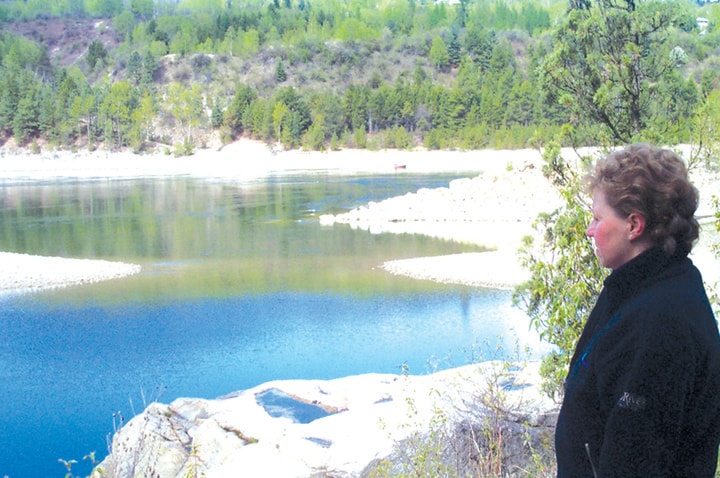Last week we started looking at Montgomery, Monte Carlo, and Waterloo, short-lived mining towns on the east side of the Columbia River south of Castlegar which were at least nearby if they weren’t the same place altogether.
Montgomery was named for Robert Fowler Montgomery Horne-Payne (1869-1929), chair of the Lillooet, Fraser River and Cariboo Gold Fields Ltd., which owned the townsite. Monte Carlo and Waterloo were named after mines in the area.
As a correspondent to the Victoria Daily Colonist of Sept. 3, 1896 described it, “At Waterloo Landing a very large city might be built. The flat is 40 miles long and several miles in breadth. The Columbia river leaves the front of the new town of Montgomery, and very little grading will be required when substantial buildings come to be erected on the plot. At present there are about 50 residents at the Landing … Several persons have come to Montgomery prepared to build substantial hotel and business houses …
“One man whom I met was felicitating himself upon the prospect of a legal contest between the three great corporations — the CPR, the Corbin, and the Heinze railway interests — with the Horne-Payne syndicate constituting a good fourth in the fight. He said that the bond, through some mistake, was claimed by all three railway companies, and that neither the Canadian Pacific Railway nor the Corbin companies would recognize the sale of Montgomery townsite.”
No one seems to have ever seen the Montgomery townsite plan, but Elsie Turnbull wrote in the winter 1976 issue of Canada West that Montgomery “was surveyed a half-mile upriver from Monte Carlo.”
Post office applications were filed for Montgomery on Aug. 22, 1896 and for Waterloo on Sept. 18, 1896. Waterloo’s application gave its population as 10 families plus 200 to 300 single men and noted the townsite wasn’t surveyed.
Montgomery was described in its application as “about ½ mile north of Waterloo.” Its population was estimated as four families plus 75 single men. J.R. Hunnex was the proposed postmaster. A post office never opened at Montgomery (possibly because there was already one by that name in Saskatchewan) but the Waterloo post office opened on May 1, 1897 — with Hunnex as postmaster. It was short lived.
A letter to postal authorities dated Oct. 25, 1898 stated all residents were leaving and Hunnex was moving to Erie. The post office closed on Dec. 1.
Strangely, a Rossland law firm made another application for a post office at Montgomery in June 1901, but a follow-up letter two days later stated an error was made: Waterloo wanted the post office, not Montgomery. Postal inspector W.H. Dorman sent a letter to the postmaster general in November 1901 stating “in the event of a post office being established at Castlegar, it will probably not be necessary to open one at Montgomery.” It didn’t open — Castlegar got its post office in April 1902.
Montgomery was never heard of again after that, although the name Waterloo stuck around for a while: it was applied to the area the Doukhobors acquired in 1908. However, according to George Woodcock and Ivan Avakumovic in their book The Doukhobors, the pacifist group renamed it Brilliant to erase Waterloo’s military association. This suggests Waterloo had crept several miles further north, for the original Waterloo Landing was in what today is considered lower Ootischenia. Brilliant and Waterloo were used interchangeably for a few years.
A late reference appeared in the Nelson Daily News of Feb. 7, 1911: “Mr. Landis states that the Doukhobor colony at Waterloo is at present engaged in cutting timber and getting out ties.”
Today Waterloo is remembered by Waterloo Rd. and Waterloo Eddy. The latter is close to the original landing.
